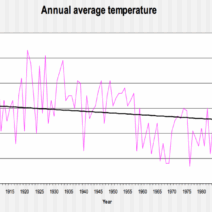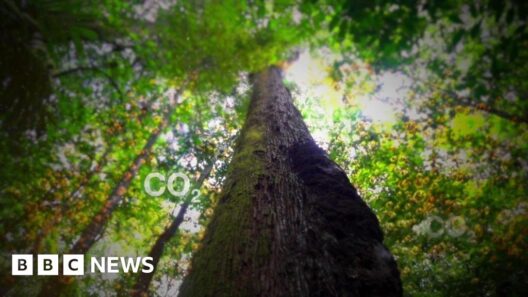The interplay between climate change and biodiversity is one of the most pressing issues of our time. Imagine standing in a lush forest, surrounded by diverse flora and fauna. Now, envision that same forest, stripped of its vibrancy, where species once abundant are now mere remnants of the past. How will climate change affect biodiversity? This question transcends simplistic answers, as the impact is profound and multifaceted.
Biodiversity, defined as the variety of life on Earth, encompasses ecosystems, species, and genetic variations within those species. It plays a crucial role in maintaining ecological balance and serves as a buffer against environmental changes. As the climate crisis escalates, the consequences for biodiversity are alarming, meriting a meticulous examination of several key areas: habitat loss, species extinction, ecosystem services, and human livelihoods.
One of the most immediate consequences of climate change is habitat loss. Rising temperatures, shifting precipitation patterns, and increasingly frequent extreme weather events are altering the landscapes that countless species rely upon for survival. For instance, consider coral reefs, which are highly sensitive to temperature fluctuations. As sea surface temperatures rise, coral bleaching occurs, leading to the death of these vibrant ecosystems. With the destruction of habitats, myriad species find themselves without a suitable environment to thrive. Will they adapt, migrate, or face inevitable extinction?
Migration is one potential response, yet it is not a panacea. Many species do not possess the ability to migrate swiftly enough to keep pace with the rapidly changing climate. Alpine plants, for instance, have limited upward migration options as they reach the summit of mountains. In terrestrial ecosystems, altered land use and urban development further complicate migration routes, creating barriers that mitigate species dispersal. In turn, local extinctions may ripple through ecosystems, resulting in diminished resilience and compromised functioning.
Moreover, climate change exacerbates existing stressors, such as pollution and invasive species, creating a perfect storm for biodiversity. The introduction of non-native species often leads to competition for resources, outcompeting native organisms, and disrupting food webs. As temperature changes provide an opportunity for invasive species to thrive, native species may find themselves ill-equipped to cope, further diminishing biodiversity. How can we curb these interwoven threats to preserve our planet’s precious biological tapestry?
The specter of extinction looms larger as climate change accelerates. The Intergovernmental Science-Policy Platform on Biodiversity and Ecosystem Services has warned that around one million species are currently threatened with extinction due to human activities, including climate change. This is not merely a loss of individual species but heralds the decline of entire ecosystems. Each species plays a distinctive role in its ecosystem, contributing to nutrient cycling, soil formation, and pollination services. Hence, the extinction of species creates a cascading effect, undermining the very foundation of ecosystem services that underpin human existence.
Climate change does not merely threaten wildlife; it also jeopardizes critical ecosystem services that humankind relies upon. These services include purifying air and water, regulating climate, and pollinating crops. As biodiversity diminishes, so too do the functionalities that sustain life. The agricultural sector, heavily dependent on diverse pollinators, will face unprecedented challenges as climate change disrupts these critical relationships. How can societies adapt to an eroding natural capital that is essential for food security?
In addition, the socio-economic ramifications of biodiversity loss are profound. Communities that depend directly on natural resources for their livelihoods—such as fishing, forestry, or agriculture—will suffer as ecosystems falter. Indigenous populations often possess an intimate understanding of local biodiversity, intertwined with their cultural identity. As climate change encroaches upon their habitats and resources, these communities are at risk of losing not only their homes but also their way of life. What measures can we employ to support these vulnerable populations in the face of such adversity?
Ultimately, the intertwined fates of climate change and biodiversity call for urgent action. Transitioning to a low-carbon economy, promoting sustainable land use practices, and enacting policies that prioritize ecosystem conservation are vital steps in ameliorating these challenges. Furthermore, fostering public awareness and education about the significance of biodiversity can empower individuals and communities to partake in conservation efforts.
As we grapple with the critical intersection of climate change and biodiversity, the stakes could not be higher. The question looms larger than ever: How will our collective actions today influence the fate of future generations? A crisis in motion demands unyielding commitment and innovation, urging a holistic approach to safeguard the intricate web of life that sustains our planet. Addressing climate change is not merely an environmental imperative; it is a moral obligation to ensure a thriving Earth for all its inhabitants.



